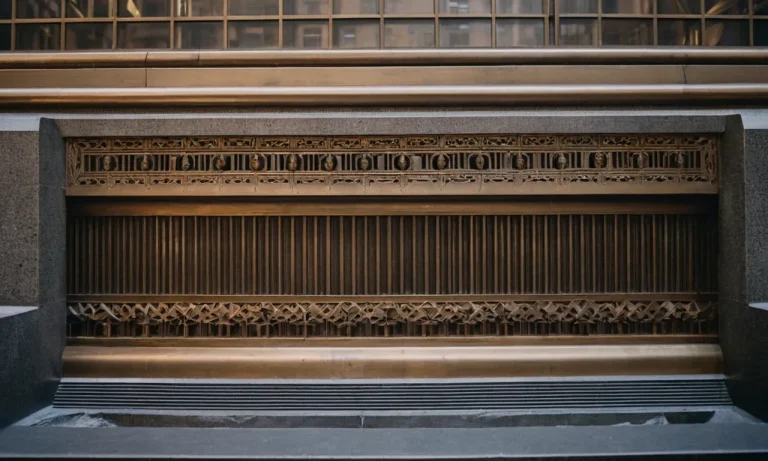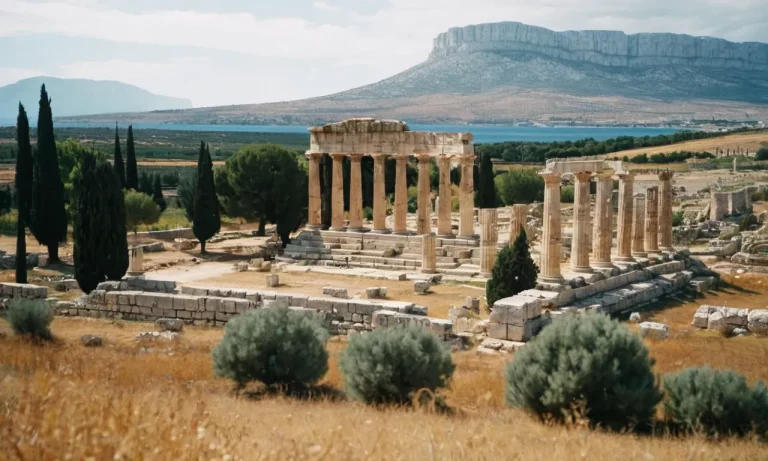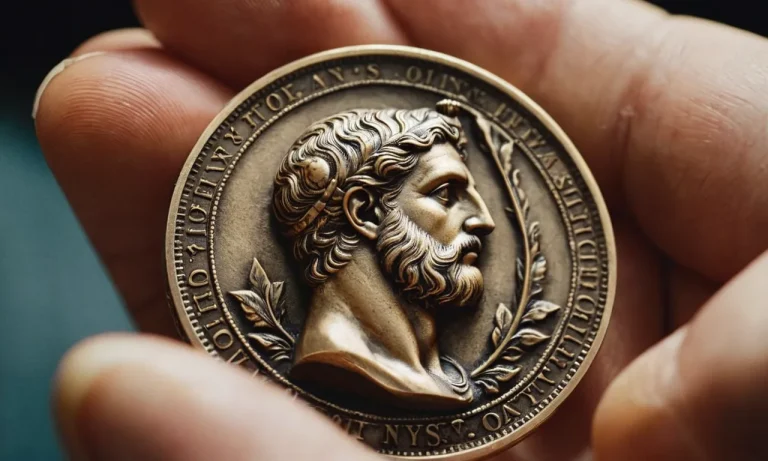Where Is Jesus’ Cross? The Mysterious Fate Of Christianity’S Most Sacred Relic
The crucifixion of Jesus Christ is one of the most iconic events in human history. Christians around the world look to the cross as a symbol of their faith. But what happened to the actual wooden cross used to crucify Jesus? Its fate has been shrouded in mystery for centuries.
If you’re short on time, here’s a quick answer to your question: The location of Jesus’ cross is unknown, but there are various theories and legends about where parts of it may have ended up after his crucifixion. Pieces are claimed to be held in churches around the world.
In this comprehensive article, we will explore the history of Jesus’ cross and analyze the evidence behind the conflicting stories of its fate after the crucifixion. We will discuss key questions such as: Did the original cross survive? If so, where did it go?
How did relics linked to Jesus’ cross become scattered around the globe? What do scholars and researchers make of the competing claims? By thoroughly examining the facts and myths around the most revered Christian relic, we will try to get closer to solving the centuries-old mystery of what really happened to Jesus’ cross.
The Crucifixion of Jesus and the Fate of the Cross
The death of Jesus Christ
Jesus Christ was condemned to death by crucifixion in approximately 30 A.D. in Jerusalem under the Roman prefect Pontius Pilate. He was nailed to a cross on Calvary hill along with two criminals. According to the Gospels, Jesus endured six hours of agony on the cross before dying from asphyxiation and cardiac arrest.
His lifeless body was then removed from the cross and placed in a tomb owned by Joseph of Arimathea. This was a common practice at the time, as crucifixion victims were not usually buried but instead left on crosses to be eaten by wild animals.
What happened to the cross after his death?
The fate of Jesus’ physical cross after his death is unclear. The Gospel accounts do not describe what happened to it. Based on common practice, historians believe the Romans likely discarded it after his body was removed.
Wooden crosses were expensive to prepare and were often reused for later crucifixion victims. The vertical wooden beam (stipes) of the cross was likely buried at the site of Jesus’ tomb since the Gospel of John records it being close to the crucifixion site.
The titulus (inscription) declaring Jesus’ supposed crime was also discarded during the burial process.
Early legends about the true cross begin to emerge
In the early centuries after Jesus’ death, various Christian traditions began to emerge about the fate of the true cross Christ was crucified on. Fragments of wood purported to be from Christ’s cross were brought back to Europe from the Holy Land as relics during the 4th century AD.
Around 326 AD, St. Helena, mother of Roman Emperor Constantine, traveled to Jerusalem and allegedly discovered the crosses of Christ and the two criminals. A healing miracle confirmed for her which cross belonged to Christ.
The relics of the true cross were then distributed around Europe and the Near East. It’s unclear if Helena actually found the true cross of Christ, but legends credit her with popularizing relics of Christ’s crucifixion across the Roman Empire and inspiring interest in the cross as a Christian symbol.
Helena’s Search for the True Cross in Jerusalem
The story of Helena’s pilgrimage to the Holy Land
In the early 4th century, Helena, the devoutly Christian mother of Roman emperor Constantine, made a pilgrimage to Jerusalem to locate Christian holy sites. According to legend, she discovered three crosses buried near Calvary, the site of Jesus’ crucifixion.
To determine which was the true cross of Christ, a sick woman was brought to the site and touched by each cross. She was miraculously healed by the third cross, revealing it as the true cross on which Jesus died.
Helena ordered the removal of a pagan temple built near Calvary and excavated the area, uncovering what she believed to be the sites of the crucifixion and burial of Jesus. The True Cross was unearthed during the excavations, along with the nails used to crucify Jesus.
Constantine instructed Bishop Macarius of Jerusalem to build the Church of the Holy Sepulchre on the site of discovery.
Versions of Helena’s pilgrimage were widely circulated and promoted by contemporary Christian writers like Eusebius and Rufinus. Her journey lent credence to the developing conception of holy sites and holy relics that became central to medieval Christianity.
Did Helena really find the cross?
Modern scholars debate the authenticity of Helena’s finding of the True Cross. The earliest accounts of her pilgrimage do not mention the True Cross at all. The legend seems to have emerged later, perhaps invented to support Constantine’s close involvement with Macarius’ building project in Jerusalem.
Some historians also point out the dubious nature of identifying the True Cross by randomly testing fragments on a sick woman. Skeptics consider the True Cross legends to be pious fictions created to authenticate the purported relics (National Geographic).
However, the story resonated with early Christians and the relic was widely accepted as genuine. Pieces of wood purported to be from the True Cross were among the most treasured relics of medieval Christianity.
The widespread veneration of alleged fragments
So many fragments of wood were circulated across Europe and venerated as pieces of the True Cross that John Calvin famously remarked “there is no abbey so poor as not to have a specimen”. Some estimates placed the total volume of all the alleged True Cross fragments in Europe during the Middle Ages at over four million cubic centimeters, far too much to have come from a single cross (Harvard University Press).
Despite modern doubts about the legend, pilgrims continued to journey to Orthodox churches in Jerusalem to venerate the remnant housed there. The quest for tangible relics and connections to holy figures like Jesus and Helena persisted as an important expression of faith for medieval Christians.
Rival Claims and Relics Around the World
European churches clash over cross relics
In the Middle Ages, various European churches and cathedrals claimed to possess fragments of the True Cross, leading to much debate over their authenticity and provenance. The Basilica of Santa Croce in Gerusalemme in Rome boasted at least 3 relics of the Cross by the 8th century, and Notre Dame Cathedral in Paris obtained a relic from Baldwin II of Constantinople in 1238.
These relics were divided up over the centuries, with supposed slivers of the Cross spreading across Christendom. Rivalries developed between institutions that claimed to hold these sacred artifacts. In the late 20th century, scientific testing revealed that many of the ancient relics were actually too young to be authentic.
Debates continue over which fragments, if any, date back to the time of Jesus Christ.
Other supposed fragments scattered globally
Beyond Europe, fragments of wood reputed to be from the Cross have been held in churches worldwide. Ethiopia possesses numerous Cross relics, including at St. Gebra Michael and Holy Trinity at Axum (sacred-destinations.com).
Armenia’s Etchmiadzin Cathedral (archaeology.travel) has displayed relics of the Cross since the 4th century AD. The Eastern Orthodox Georgian monastery of Khakhuli has also claimed to house Cross fragments.
Debates over authenticity of various relics
Given the proliferation of relics, their legitimacy has often been challenged. The Catholic Church has never officially ruled on the authenticity of any specific relic tied to the Cross. While millions of Christians venerate Cross relics to this day, most scholars believe the original wood of Christ’s crucifixion cross has been lost to time.
Recent radiocarbon dating showed that particles in Rome’s Basilica of the Holy Cross were too young, from the 9th to 12th centuries AD (National Geographic). The debate over rival claims shows how profoundly these artifacts resonate for the faithful, even if their provenance is uncertain.
The symbolic meaning behind these fragments persists, representing Jesus’s passion and the promise of salvation.
Scientific Analysis and Academic Investigations
Carbon dating and other forensic tests on relics
Scientific methods like radiocarbon dating have been applied to alleged pieces of the True Cross to assess their authenticity and age. For example, in the 1950s, fragments of wood claimed to be from the True Cross were carbon dated by archaeologists at Oxford University.
The tests concluded the wood was from the Middle Ages, suggesting they were not authentic relics of Christ’s crucifixion. However, some believers critique the accuracy of carbon dating or propose the tested fragments were not actually part of the Cross.
Debate continues among scholars about the reliability of carbon dating and its usefulness in understanding relics like the True Cross that have been widely dispersed, stolen, and re-discovered throughout history.
Critical historical perspectives from scholars
Many scholars have also analyzed the True Cross from a historical-critical perspective. For instance, the John Dominic Crossan has argued the True Cross veneration emerged gradually in early Christianity as legends developed about its discovery.
Critics like Crossan contend the story of Helena finding the True Cross was influenced by the political agendas of her son, Emperor Constantine, and lack reliable evidence. Other historians like Kyle Harper have highlighted how True Cross veneration intertwined with Greco-Roman ideas about relics having supernatural power.
The diverse academic perspectives reveal the complex factors behind early Christian relic practices.
The metaphorical significance vs. physical authenticity
Moreover, scholars often debate the metaphorical meaning versus physical authenticity of the True Cross for believers. Critics argue alleged True Cross fragments fail to offer solid empirical proof of Christ’s Passion.
However, defenders note metaphysical relics hold symbolic value for Christians regardless of their material verification. Medieval theologians like Thomas Aquinas emphasized how the Cross represents Christ’s redemptive sacrifice rather than functioning as a scientific specimen.
Ultimately, Holy Relics like the True Cross provide an intriguing case study on the intersection of spiritual symbolism, church tradition, and the desire for tangible connections to sacred history. Their study sheds light on both the empirical limits and metaphysical hopes underpinning relic veneration practices.
The Enduring Mystery and Allure of the Cross
Why locating the true cross still fascinates people
The purported cross of Jesus holds an enduring fascination for many Christians. Locating the original cross on which Jesus was crucified has been an quest for centuries. Here are some reasons why the fascination endures:
It was the instrument of Jesus’ death and resurrection – For believers, the cross is the means by which Jesus atoned for the sins of humanity. It represents the central event of Christian theology and the mechanism of salvation.
Finding the actual relic connects people back to the foundation of their faith.
The cross had a miraculous power according to legends – Stories spread of the cross having supernatural effects, such as healing the sick or reviving the dead. People desired contact with it for miracles.
It contained a physical link to Jesus – Many Christians yearn for tangible evidence of their faith. Locating the true cross would offer a powerful physical connection to Christ himself. This desire for material relics persists today with fervor.
The cross presented political opportunity – Possession of the cross offered authority and legitimacy. Rulers and religious leaders vied to control and display the cross as a symbol of power.
It inspired great quests and adventures – The allure of the cross sent the empress Helena and knights like Louis IX on daring journeys to find and claim the relic. These exciting tales captivated people’s imaginations.
How the legend shapes culture and faith today
The legend of the true cross still influences Christianity and culture today in several ways:
Relic pilgrimages remain popular – Many Christians journey to sites claiming to hold pieces of the cross, such as Rome’s Basilica di Santa Croce and Jerusalem’s Church of the Holy Sepulchre. These pilgrimages connect the faithful across time.
The cross icons prove ubiquitous – Versions of the cross pervade churches, art, jewelry, and symbols of faith. Its image remains one of the most instantly recognizable icons across the world.
Debates over authenticity persist – Churches and collectors still quarrel over and conduct tests on alleged fragments. The uncertainty fuels continued fascination.
The story resonates culturally – Tales of the cross, like Galatians 2:20, remain meaningful metaphors and cultural touchpoints even beyond Christianity. The quest also endures in books and movies.
Apocryphal legends inspire and mislead – Spurious tales of supernatural feats confuse facts but also demonstrate the cross’s hold on popular imagination.
Will the debate over authenticity ever be settled?
Despite advanced testing on relics, the debate over the true cross’s authenticity seems unlikely to be settled conclusively. Here are some factors that perpetuate the uncertainty:
– The number of alleged fragments far exceeds the size of a single cross
– Records past Constantine’s era are unreliable
– Provenance is convoluted after centuries of shifting hands
– Independent scientific testing is limited
However, for many faithful the historiographical debates matter less than what the cross represents – the Passion, salvation, and sacrifice of Jesus Christ. The fragments facilitate reflection on these theological truths for many believers regardless of each artifact’s factuality.
In the end, the enduring mystery and appeal of the cross may lie not in settling debates but in enabling spiritual connections with its legendary power.
Conclusion
The fate of Jesus’ cross has been a topic of intrigue and debate for almost two millennia. While historical accounts offer tantalizing clues, the physical evidence surrounding relics linked to the cross remains inconclusive.
Its status as Christendom’s most sacred relic will likely ensure that the mystery continues to captivate the imaginations of the faithful and scholars alike. Yet its enduring power as a symbol proves that, on a spiritual level, the search for the cross’s fragments across continents speaks to the very heart of the Christian message.








